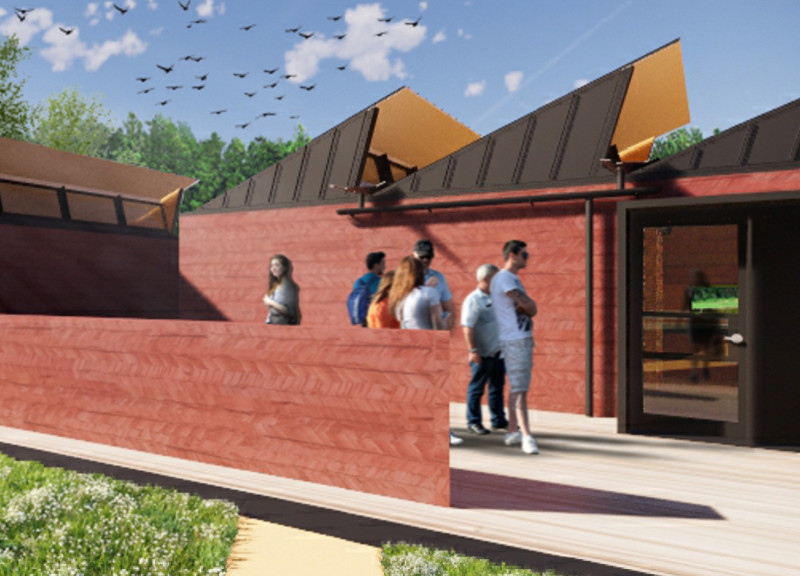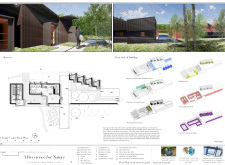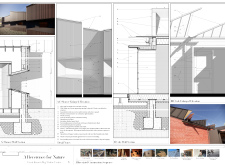5 key facts about this project
The Great Kemeri Bog Visitor Center is located in the scenic landscape of the "land of the Balts." It serves both an educational purpose and a recreational space for visitors looking to explore the unique features of the Kemeri bog. The design emphasizes the connection between the building and its natural surroundings, enhancing the experiences of those who come to enjoy the area.
Architectural Integration
Visitors access the center along a wood-boarded walkway lined with Silver Birch and Black Alder trees, which creates a welcoming entry point. The exterior features outdoor spaces made from hewn logs, reflecting a style that harmonizes with the natural environment. Large glass windows and skylights allow in ample natural light and frame the views of the bog, linking the interior spaces with the landscape outside.
Functional Spaces
Within the visitor center, a café provides a place for guests to relax, while an information center offers insights into the local plant and animal life. There are facilities for overnight visitors, including dedicated showers set among clusters of Black Alder trees. This multifunctional approach ensures that the center meets a variety of needs, accommodating both day visitors and those who choose to stay longer.
Sustainability Considerations
Sustainable features are inherent in the design, including a rainwater collection system and a blackwater treatment system. These elements demonstrate a commitment to environmental responsibility by capturing rainwater for various uses in the center. The design emphasizes the importance of sustainability, reflecting a desire to manage resources thoughtfully and reduce ecological impact.
Material Palette
The materials used in the construction include hewn logs with red paint, standing seam metal roofs, galvanized steel plate gutters, and Shou Sugi Ban slats for the shower siding. This selection combines traditional and modern materials, providing durability while resonating with the landscape. The technique of Shou Sugi Ban, which involves charring wood to improve its weather resistance, highlights a practical choice that respects the natural setting.
Operable windows help to promote cross-ventilation, contributing to indoor air quality and comfort. This attention to detail enhances the overall experience for visitors, making the center a functional and educational part of the Kemeri bog environment.





















































